Renovation White Clover Seeds

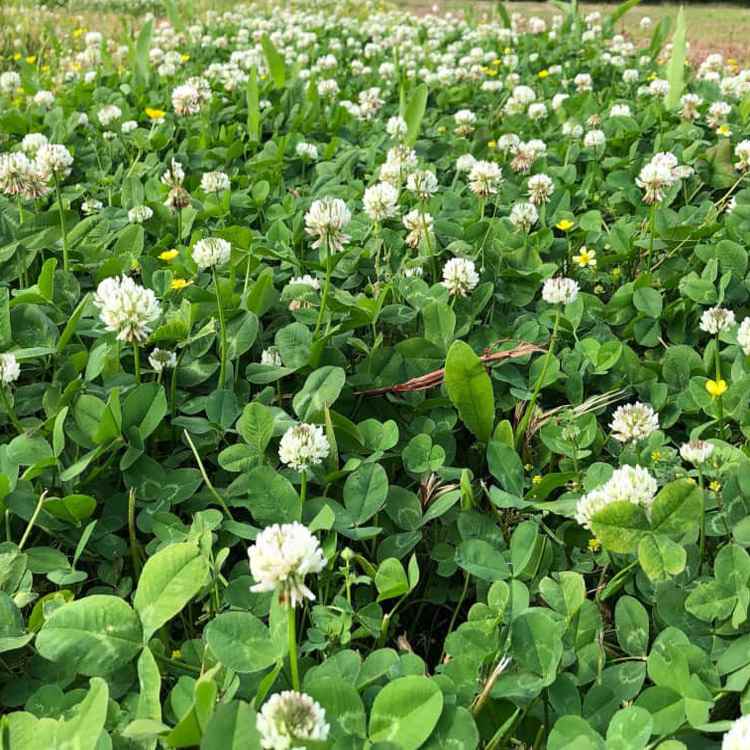
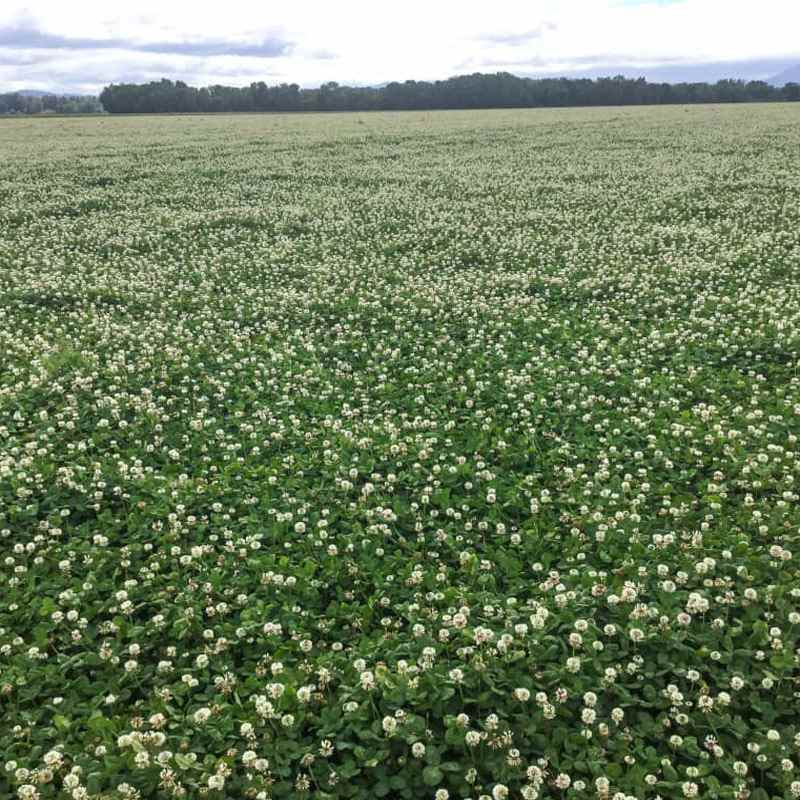
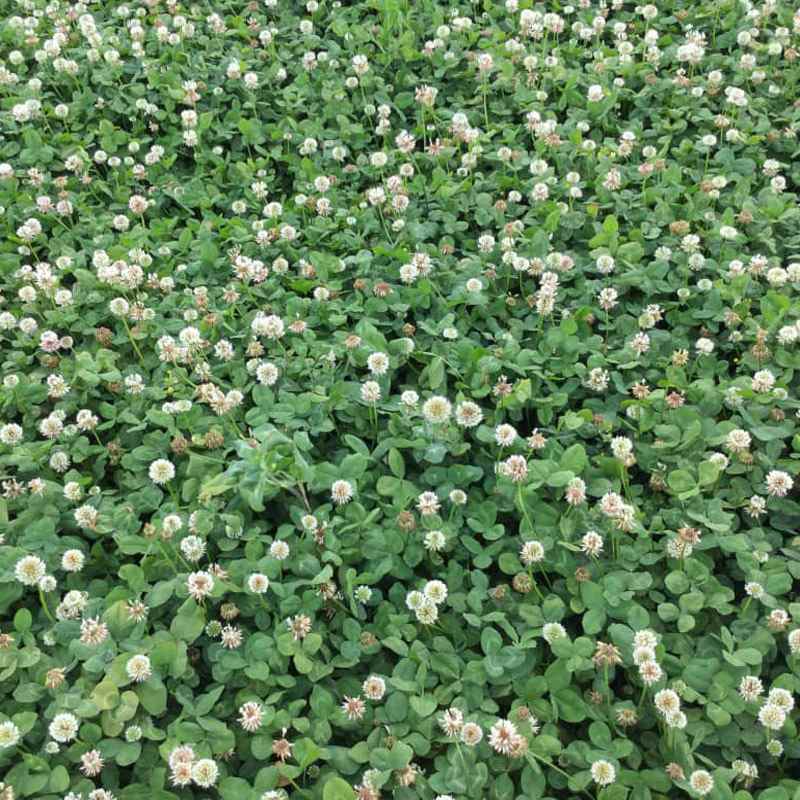
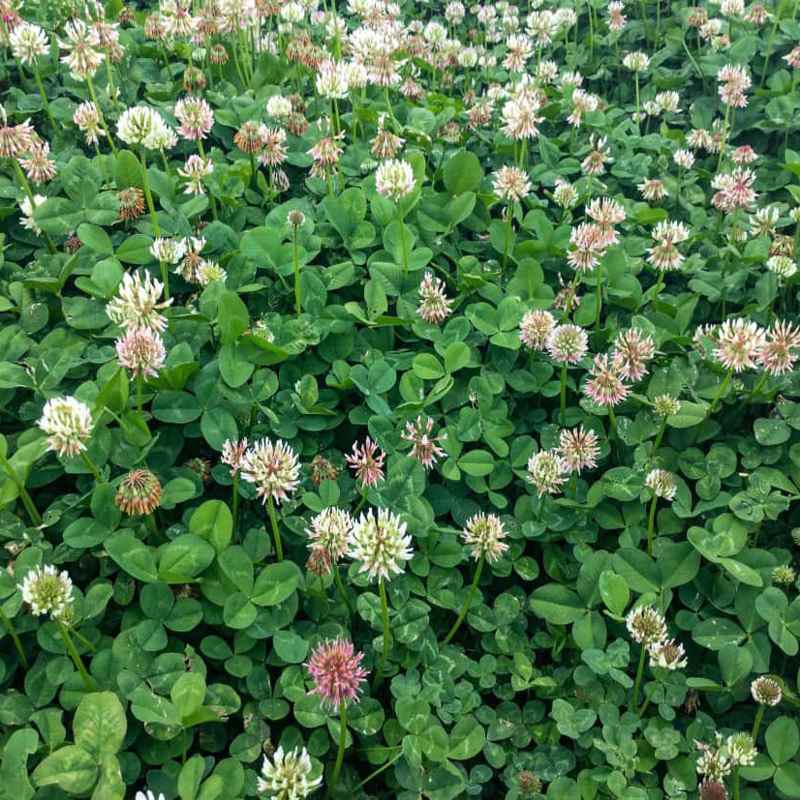
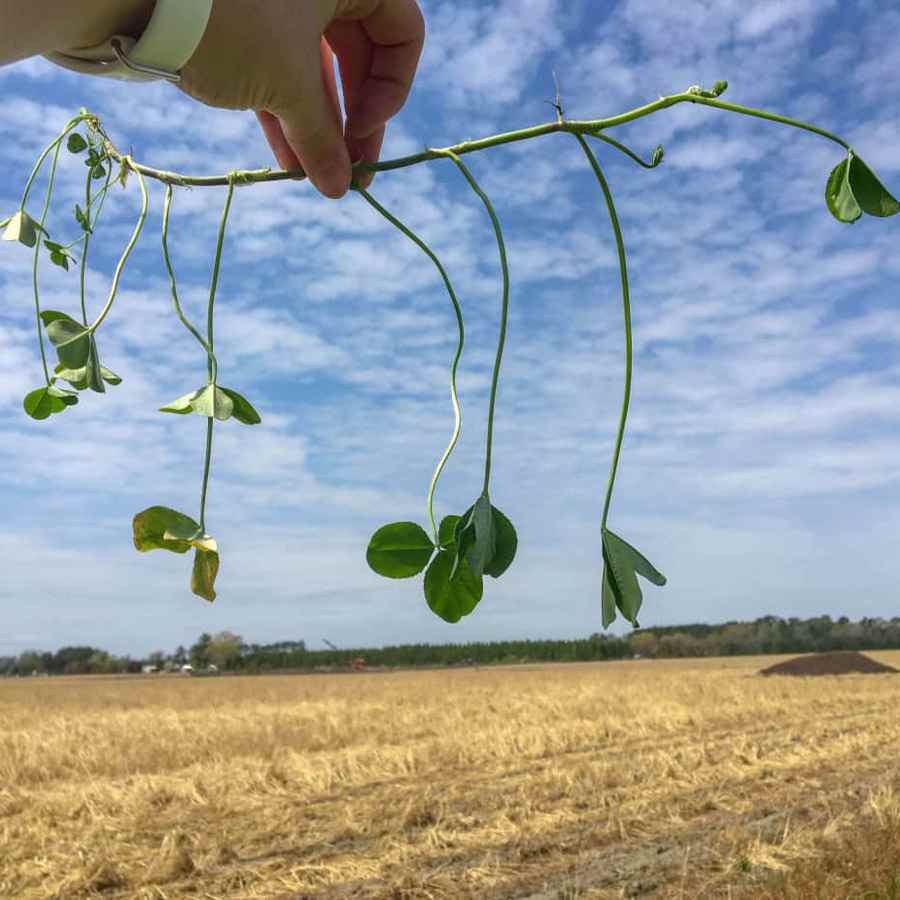
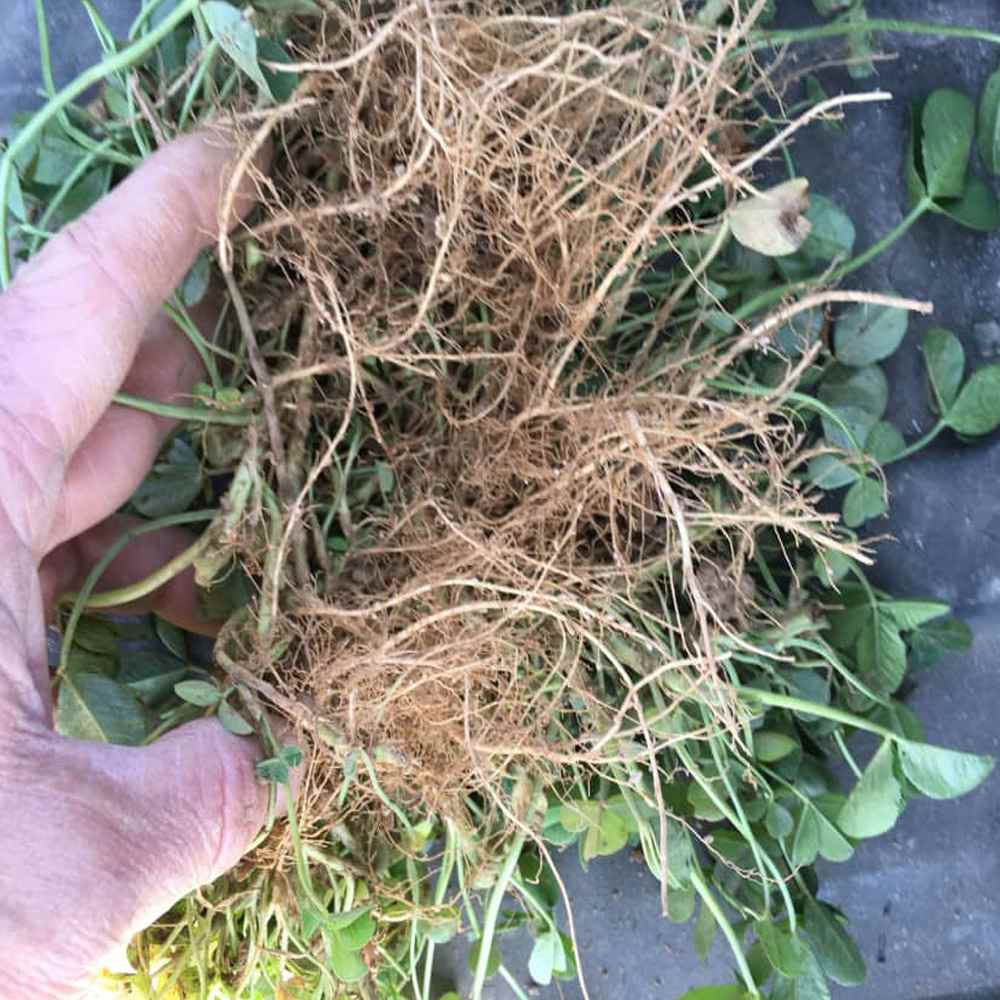
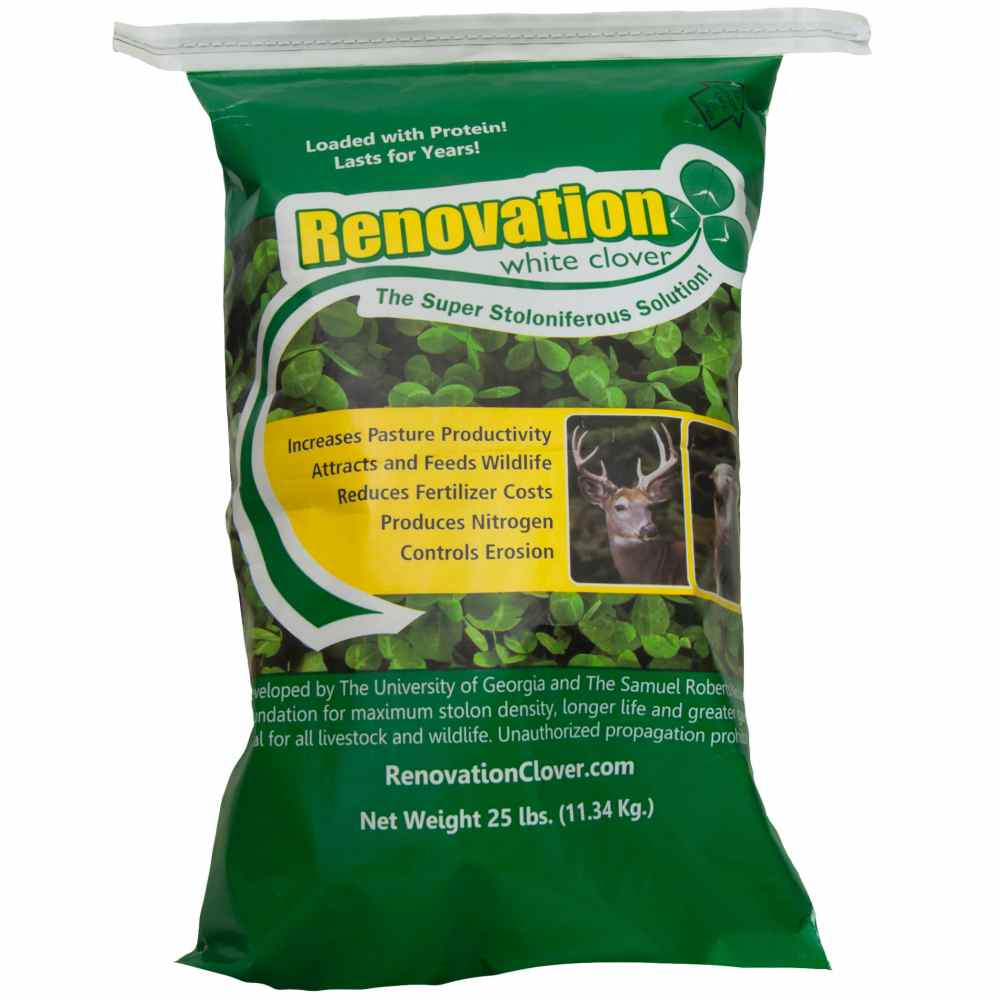
Renovation White Clover (Trifolium Repens) - It's time to renovate your pastures with Renovation white clover. Simply plant a small amount of this long-living white clover to increase pasture productivity, attract and feed wildlife, reduce fertilizer cost, capture free nitrogen, dilute toxic fescue pastures, and control erosion. Renovation should reach a mature height of about 8 - 10" and will maintain that height if unmowed.
Features:- Increased Longevity - Renovation was bred for increased stolon density utilizing a combination of long-living Southern Plain ecotypes and disease resistant ladino types. The result is increased persistence, even under grazing.
- Wildlife Attractant - Renovation is an ideal legume for wildlife food plots, as a three-fold contributor: providing a high-protein food source, acting as a seasonal attractant, and contributing nitrogen to surrounding plants.
- Wider Leaves - Renovation has wider leaves, closer to ladino-type clovers. This means more forage and less weed pressure, even under grazing.
- Fescue Toxicosis Mitigation - When planted into toxic endophyte pastures, Renovation can help lessen the effects of endophyte toxicity and contribute to overall herd health.
- Pasture Improvement - Renovation is an excellent choice to improve and maintain healthy productive pastures. Renovation is ideal for all livestock.
- Early Growth - Renovation has early growth habits compared to other white clovers.
Forage:
Renovation is an excellent choice to improve and maintain healthy productive pastures. For optimal animal performance a good pasture should maintain 20% or more of legumes by dry matter measurements. Renovation makes this goal achievable! In 2009, Renovation was planted into a deteriorating tall fescue stand and compared to a nitrogen-only fertilized control plot. Not only did Renovation maintain clover coverage above 25%, it also provided an additional 0.40 lbs. ADG over the fertilized control. When planted into toxic endophyte pastures, Renovation can help lessen the effects of endophyte toxicity and contribute to overall herd health. Renovation is an ideal companion legume for orchardgrass, perennial ryegrass, tall fescue, and other cool season grass, promising years of productivity. Renovation can also be planted into warm-season pastures, where it may act either as a short-lived perennial or a self-seeding annual, based on location and weather.
Wildlife:
Wildlife Renovation is an ideal legume for wildlife food plots, as a three-fold contributor: providing a high-protein food source, acting as a seasonal attractant, and contributing nitrogen to surrounding plants. Renovation works extremely well in mixes with chicory, cereal rye, wheat, brassicas (turnips, radish, kale), peas, and other clovers.
Pollinators:
Thanks to its abundance of flowers, and extra longevity, Renovation can provide a safe, natural habitat for pollinators. Honeybees and other pollinators can easily access the nectar in the short florets.
Erosion Control/Stabilization/Living Mulch:
Renovation’s ability to aggressively spread makes it perfect for erosion control and slope stabilization. Renovation is also ideal for use as a living mulch in vineyards, vegetable beds, and other area where living ground cover is desired. Work at the University of Georgia is evaluating low-growing aggressive white clover use in corn production.
Planting:
Before You Plant - Renovation performs best in soils with a pH 6.0-6.5. It will also grow in semi-acidic soils as low as pH 5.0. Renovation will perform better on moist, well-drained, fertile soil. Seeding into deep sandy soils is not recommended. For optimal performance, conduct a soil test and follow the recommended lime and fertilizer recommendations. In established pastures, remove excess forage through grazing or late season haying. This will help ensure successful seedling emergence and establishment. Reduce weed population prior to planting. Be aware of herbicide carryover/residual of chemicals applications prior to planting.
When To Plant - All cool-season clovers, including Renovation, need time to establish before harsh weather arrives. In the lower Southern USA, the best time to plant is late fall. In the upper South, plant mid-late fall or early spring. In the North, plant early fall or early spring. If planting during other times, reseeding may be necessary to achieve an optimal stand.
Frost Seeding - Frost seeding works well in regions which experience frozen ground in the winter. In these regions, frost seed when the ground is frozen solid in the morning and thawing in the heat of the day. Renovation is sold ready to seed and preinoculated with Nitro-Coat® for optimal nitrogen fixation.
Depth/Method - Plant at 1/8-1/4" into a prepared/firm seedbed by broadcast or drill. Planting too deep may lead to poor establishment or stand failure. Cultipacking or dragging before and after seeding helps create a firm seedbed.
Fertilizing - At time of seeding, apply lime, potassium and phosphorus per soil test recommendation. No nitrogen is necessary.
Inoculated Seed - Our Renovation white clover seed has been coated with an inoculant for better establishment. Nitrogen fixation is a one of the key values found in legumes and can only occur with the proper inoculation. Although many strains or Rhizobium may be present in the soil, all are not equally beneficial. With Nitro-Coat® each seed is inoculated with the correct Rhizobium strains and coated through a proven process that ensures a very high level of successful inoculation. A key to any successful establishment and early seed development is moisture. Nitro-Coat® is naturally water absorbent and helps attract soil moisture to the seed, getting your stand established quickly. This coating process which Outsidepride utilizes, assures that only the top-performing and crop-specific rhizobia will be applied to ensure your clovers reach maximum nodulation, stand establishment, and yield potential. With Nitro-Coat® each seed is inoculated with the correct Rhizobium strains and coated through a proven process that ensures a very high level of successful inoculation. The weight of the clover seeds will contain approximately 34% coating material that contains the inoculant and water holding material for better establishment and viability of the seed. There is no difference in the seeding rates between the coated and raw seed due to the increased germination and viability of the bulk clover seeds that are coated and inoculated. This coating material is not OMRI certified.
Management:
Once established and properly managed, Renovation should provide numerous years of free nitrogen and protein-rich feed. Longevity will depend on location and management. In hotter regions, with predominately warm-season species, it should last at least 1-2 years, while in cooler climates it should live 3-5 years, or longer. Broadcast 1 lb/acre of seed annually, or as needed. Researchers recommend 25-30% clover percentages in grass pastures. Bloat is a concern for pastures exceeding 35% white clover. The percentage of Renovation in a stand can be managed using these tools: grazing or mowing height, fertilization, and reseeding.
- To increase the amount of Renovation, graze or mow more frequently at lower heights. This allows Renovation plants to increase their photosynthesis activity, and excite more stolon growth. Regularly fertilize with nitrogen-free fertilizer based on soil test recommendation. Lastly, overseed thin areas with more Renovation.
- To decrease the amount of Renovation, increase grazing and mowing heights, fertilize with nitrogen, and introduce other desired plants.
Seeding Rate: 5 lbs per acre































